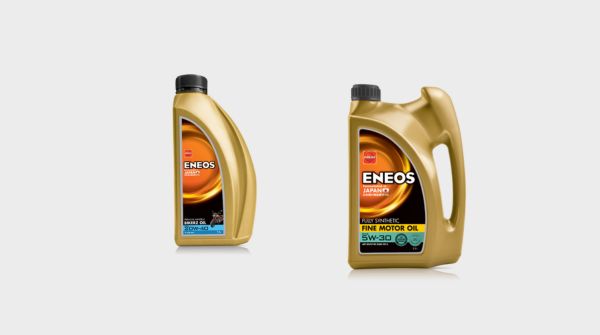You might have seen plenty of sleek bottles on a store’s shelf and got confused about what all the variations are for. Or you would probably have been asked by your mechanic, “Which oil are you using?” Most of you would just nod, pick the coolest label and hope for the best. And yes, continue pouring the same engine oil in your motorcycle as you do in your four-wheeler. There is a wide range of oils in the market because there surely lies the difference between them. Many might have wondered if a bike engine oil and a car engine oil are the same. The answer is an absolute no. Both these vehicles have different body parts, performance and overall mechanisms. Thus, they require specific engine oils to offer a greater experience. Keep reading this blog to learn the difference between bike and car engine oils and how you can get better results with the right usage.
Understanding Different Types of Oil Grades
Before diving deep into car vs bike, let’s first understand the types of engine oil available in the market:
● Mineral Oil:
It is the natural crude oil, derived directly from nature. Mineral oil is used to operate car engines after refining them. It is the only one that is found naturally and obtained from crude oil.
● Synthetic Oil:
When the oil is refined and advanced chemicals are used to offer the best performance to the vehicle, it is called synthetic oil. These chemicals are especially added to increase engine performance and make them long-lasting.
● Semi-synthetic Oil:
Semi-synthetic oils are a blend of both mineral and synthetic variants. That means it contains natural oils and synthetic ones to further enhance its performance in the engine. The proportion of the mixture is mainly 70% mineral oil and 30% synthetic oil.
Key Differences Between Motorcycle and Car Engine Oil
To understand the difference, we need to peek into how engines in bikes and cars operate. Let’s answer this long-standing question:
● The Transmission:
Most motorcycles have wet clutch systems, meaning the clutch and engine share the same oil. This oil must not only lubricate but also provide the correct friction for clutch operation. Too slippery, and the clutch slips. Too thick, and the engine struggles. Cars, on the other hand, have separate compartments for engine oil and transmission fluid. Their oils focus purely on engine performance, without worrying about clutch friction.
● Oil Viscosity:
Another major difference lies in the viscosity of the motorcycle and four-wheeler engine oil. Car oil has a thicker consistency and is more viscous, manufactured to handle high pressure and temperature generated by car engines. Meanwhile, a bike engine oil is thinner in nature, less viscous, and designed to manage low temperatures and the pressure of motorcycle engines.
● Additives:
The real power of engine oil lies in its additives. The additives used in the oil help prevent rust, reduce wear, and improve stability. In a bike engine oil, additives must support clutch grip, resist breakdown under high RPMs, and maintain performance in smaller crankcases. In a car engine oil, the focus is on thermal breakdown resistance, long drain intervals, and preventing deposits in larger engines. Using the wrong oil with mismatched additives can lead to faster wear and tear, reduced mileage, overheating or, worse, engine seizure.
● Fuel Efficiency:
Car and bike oil differ in their fuel efficiency performance. The cars typically have larger engines and are more complex, demanding more energy to operate. That is why car oil is specifically designed to offer good fuel efficiency; motorcycle oil, on the other hand, is formulated for better engine performance. Using the right one can reduce your vehicle’s oil consumption, lower emissions and improve overall fuel efficiency.
● Oil Grade:
Oil grade, or viscosity, is the measure of its thickness and flow. The two-wheeler engine oil grade ranges between 0W-20 and 5W-30, and car oil mainly ranges from 0W-20 to 10W-30. The ‘W’ in grades indicates the performance of oil during colder months. The numbers after the W refer to the average viscosity of oil at higher temperatures. Here’s a quick guide to understanding viscosity grades:
| Viscosity Grade | Description |
| 0W-20 | Very thin consistency and superior performance in winter |
| 5W-20 | Less thin than 0W-20 and performs well during cold weather. |
| 5W-30 | Medium viscosity, and gives good performance all year round. |
| 10W-30 | Thick and offers excellent performance at high temperatures. |
Conclusion
Engine oil isn’t just a maintenance vehicle component in your list; it is the heart of your car or bike. Choosing the right oil not only boosts the lifespan of your automobile but also elevates your riding experience. It is like the right food that impacts longevity, performance and overall health. So, next time you walk into the store clueless or hit “Buy Now” online, remember that the two-wheeler and four-wheeler engine oils are not interchangeable. They are engineered with a specific formulation to meet the unique demands of different machines. So, ditch the traditional oil usage bit and allow your vehicle to define you!



